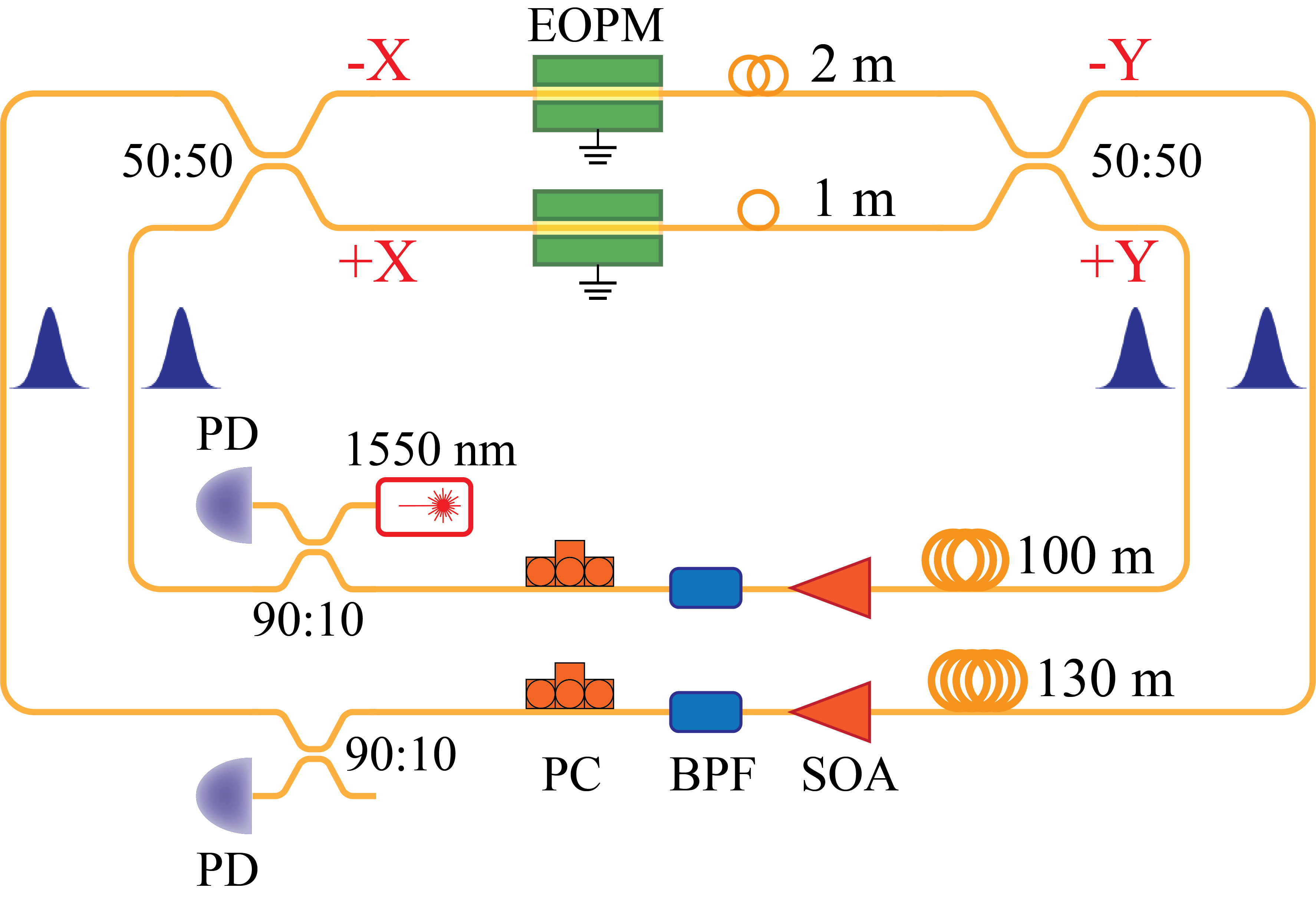Topological Photonics
Topological Phases using Integrated Photonics
Topological insulators are special materials that are insulators in their bulk but they host unidirectional and conducting states at their edges. These insulators are called topological insulators because, from a fundamental perspective, their properties depend only on the global symmetries and topology of the system, that is, how things are connected. The edge states are, therefore, robust against any local defects or deformations in their shape of the sample as long as the topology of the sample remains the same.
We use 2D arrays of coupled ring resonators to realize photonic analogs of topological insulator models, including the integer and the anomalous quantum Hall model, higher-order topological phases, 2D SSH, and so on.

Topological Phases using Synthetic Dimensions
An interesting avenue for the exploration of exotic topological photonic systems is the use of various photonic degrees of freedom, for example, time and frequency, as synthetic dimensions. Evidently, synthetic dimensions can enable the realization of three- and higher-dimensional topological phases of light, that are otherwise challenging (or impossible) using only the spatial dimensions. We are interested in using discrete frequency and time bins, which are also the leading choice for encoding quantum states of light, as synthetic dimensions to realize photonic analogs of topoligcal insulators.

Quantum Photonics
Topological Sources of Quantum Light
Photonic quantum technologies ultimately rely on sources of quantum light that are compact and scalable, and at the same time, allow engineering of the quantum state of light. The most versatile and scalable platform to generate quantum states of light is via nonlinear spontaneous parametric processes in integrated nanophotonic systems, for example, ring resonators that can resonantly enhance nonlinear interactions which are otherwise very weak.
We are interested in using the topological system of coupled ring resonators as a platform to generate quantum states of light. Specifically, we use the linear dispersion of topological edge states and the presence of multiple ring resonators to engineer the spectral-temporal properties of quantum states of light and to simultaneously enhance their generation.

Topological Frequency Combs and Kerr Solitons
An optical frequency comb is a source of light whose spectrum consists of multiple lines equally spaced in frequency. Recent advances in realizing optical frequency combs using nonlinear parametric processes in integrated photonic resonators have revolutionized chip-scale optical clocks, light detection and ranging (LiDAR), frequency synthesis, spectroscopy, and multi-channel optical communications.
We are investigating the generation of coherent optical frequency combs and temporal Kerr solitons using topological ring resonator platform. We exploit the fact that the topological edge states circulate around the boundary of the lattice, and because of their unidirectionality, they constitute a travelling-wave super-ring resonator formed of multiple single-ring resonators. This unique self-similarity of topological ring resonator plaform can lead to the generation of highly efficient and robust nested optical frequency combs.

Engineering Quantum States of Light
Photons offer a number of degrees of freedom in which we can encode quantum information or to say entangle photons. Nevertheless, a common challenge in quantum information processing using photons is the limited ability to manipulate and measure multi-photon states. We are particuarly interested in engineering multi-photon states entangled in spectral-temporal degrees of freedom, using techniques such as electro-optic modulators and time-to-frequency mapping.

2D Materials and Hybrid Topological Systems
Atomically thin 2D materials, such as transition metal dichalcogenides, are intriguing optoelectronic systems that show a myriad of condensed matter phenomena, including topological features such as the quantum spin-Hall and the valley-Hall effects. These systems can be probed and manipulated using light, and in the strong coupling regime, they could also mediate interactions between photons via exciton-polaritons. Furthermore, they host quantum-dot like defects which behave as single quantum emitters. I
We are interested in integrating such solid-state topological systems with engineered photonic systems, and use exciton-polariton mediated nonlinear interactions and hybrid topological protection for realizing novel quantum photonic devices.
